
| Dalmatian Coast Sail and Cycle |
Getting There |
|
|
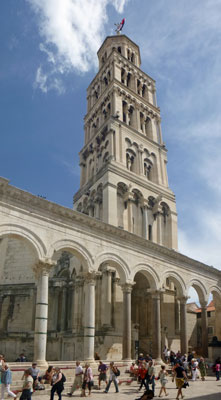 The belltower of St Duje |
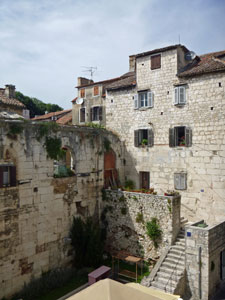 The walls of Old Split |
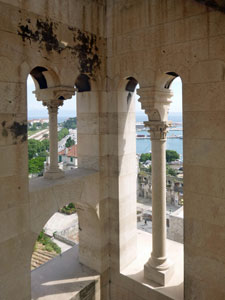 Inside the belltower |
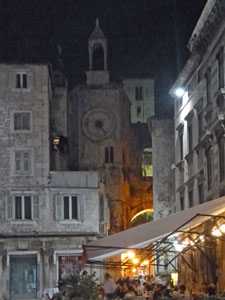 Split by night |
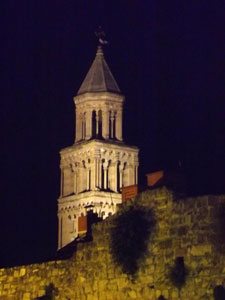 The belltower from our window |
|
|||
    |
Day 1 - Split to Rogoznica |
|
|
||
 Heading out from Split |
 Rogoznica in red and white |
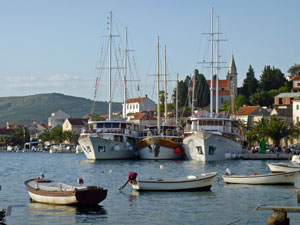 The harbour at Rogoznica |
|
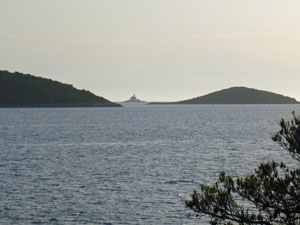 Evening falls on the Adriatic |
 |
Day 2 - Rogoznica to Primosten and on to Vodice by boat (15 km cycling) |
|
||
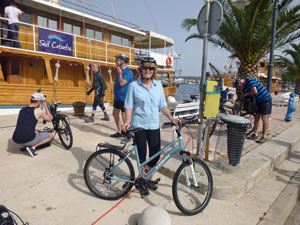 All ready to ride |
From here a long thin peleton headed northwards out across the scrubby Mediterranean landscape, the wind at our backs, following stone lined dirt tracks and narrow country roads through the olive groves. Reaching a more major road, we commenced our first (and only) big climb for the day, which split the peleton and rewarded us with panoramic views out over the coast to the hazy Adriatic beyond. Ahead lay our destination, the old town of Primosten with its church tower dominating the distant horizon. |
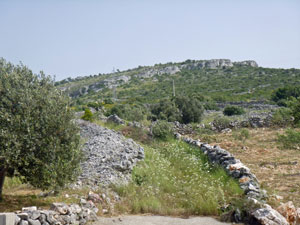 Old stone walls on the coastal hills |
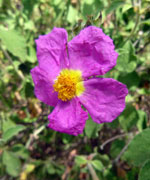 |
|
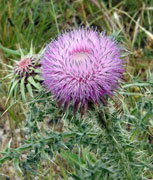 |
A fairly strong southerly had by now sprung up, which helped our climb - but from this point it was all downhill to the town. The views of Primosten unfolded as we descended, now looking out over the bay to the old stone buildings on a round-topped peninsula. We had a coffee in the main square, before heading on to rejoin the "Novi Dan", which had sailed around from Rogoznica. The waters of the bay were now whipped with whitecaps, but across the bay, the fair Nello and I spied a sheltered little cove set amongst the coastal pines. It was too tempting - we grabbed our bathers, hopped on our bikes and headed around for a refreshing swim in the cool Adriatic waters .... the best way to finish a bike ride and we celebrated with a glass of chilled Krk white, produced from grapes grown on one of the nearby islands. |
||
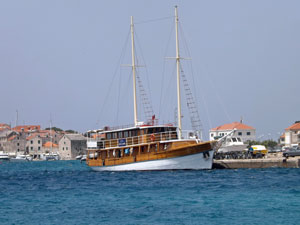 The "Novi Dan" moored at Primosten |
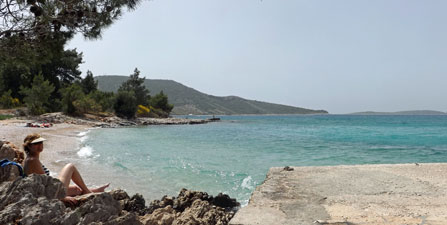 Time for a swim in the Adriatic |
|
|
|
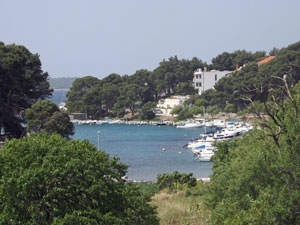 A coastal resort |
 Seaward side of Primosten |
|
|
 |
Day 3 - Vodice to Betina by bike and on to Sali by boat (23 km cycling) |
|
||
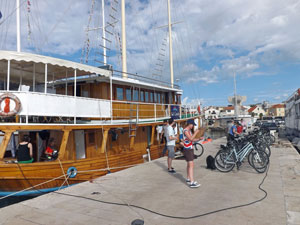 Getting ready for the next bike ride |
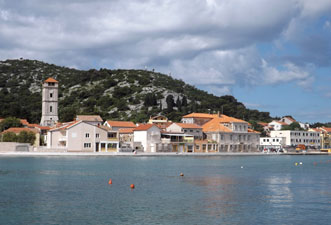 Vodice across the water |
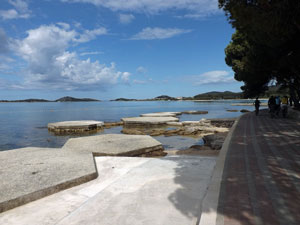 The "beach" at Vodice |
|
|
|
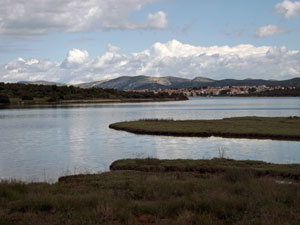 Inlet near Pirovac |
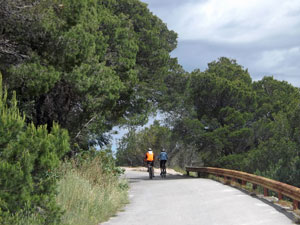 A pine-lined road on Murter |
|
|
|
The pattern of the trip was now clear - ride in the morning, lunch and swim in the early afternoon and sail on to the next port in the late afternoon. It was now lunchtime, so the fair Nello and I bought ourselves a slab of local cheese and ham and some fresh bread and headed back down to a swimming spot for our now-customary dip in the invigoratingly cold clear water of the Adriatic. |
||
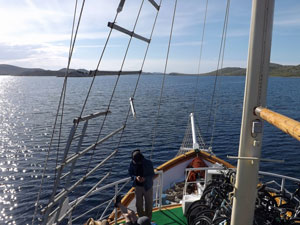 Leaving Murter |
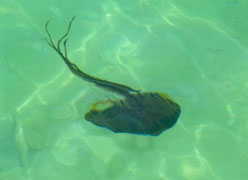 |
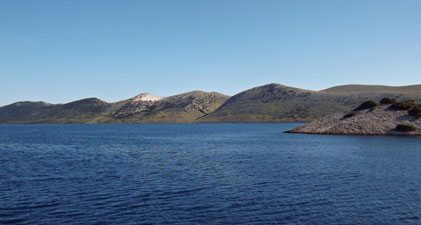 The long spine of Kornat Island |
|
|
|
|
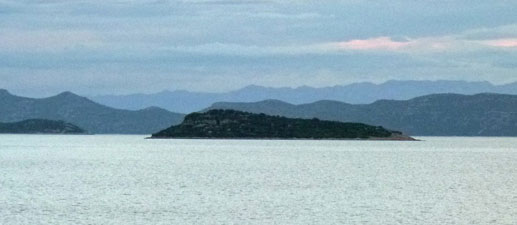 Evening falls over the Adriatic |
 |
Day 4 - Sali to Brbinj by bike and on to Zadar by boat (29 km cycling) |
|
||
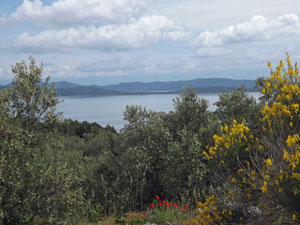 The landscape of Dugi Otok |
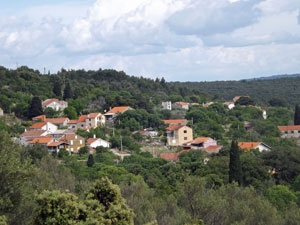 Passing the village of Zman |
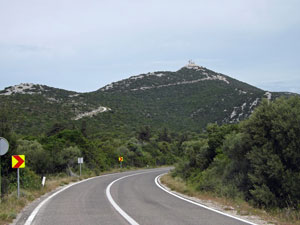 Highest point of Dugi Otok |
|
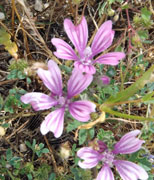 |
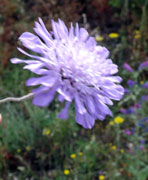 |
|
|
|
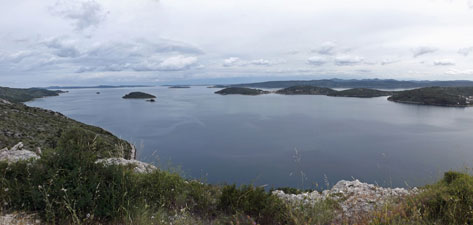 View from Dugi Otok of the neighbouring islets |
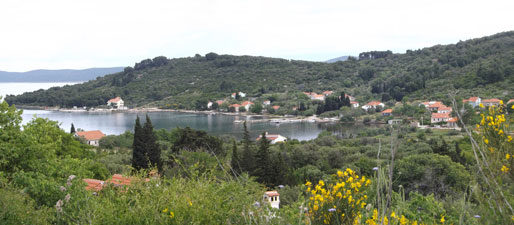 The setting of Brbinj village |
For most of this long undulating route we stayed on the eastern side of the island, crossing the barren grassy ridge to the western side, with the open and empty Adriatic beyond, briefly once before returning to the island-speckled eastern side. A long downhill and turn off brought us to the spread-out village of Brbinj, where the "Novi Dan" was waiting for us in a pretty little pine-fringed cove. We had covered the day's route more quickly than expected, and it was definitely time for our daily swim. Unexpectedly, the water here was even cooler than elsewhere - bracing but still great after a long sweaty ride. |
|
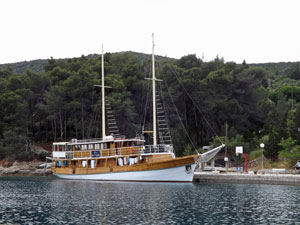 The "Novi Dan" |
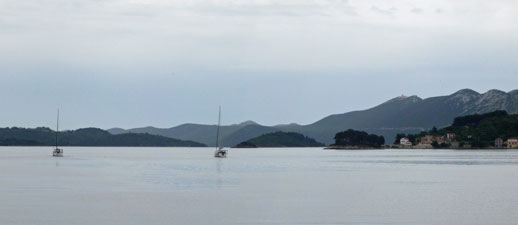 Leaving Brbinj |
Our boat pulled anchor at 1pm and we sailed off towards Zadar, threading our way through the inner islands, before heading southwards down the broad channel to reach this tourist hub and ancient walled city on the Dalmatian Coast. It was time to explore, but we would be doing this in the rain as the grey cloud that had been building up finally delivered on its threat. |
||
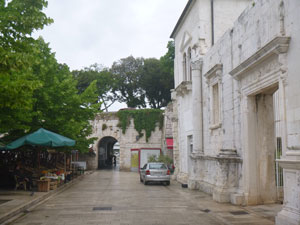 The streets of old Zadar |
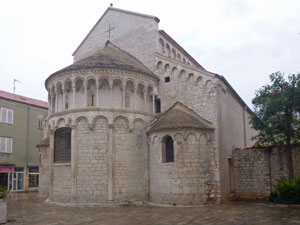 St Chrysogonus church (12th century) |
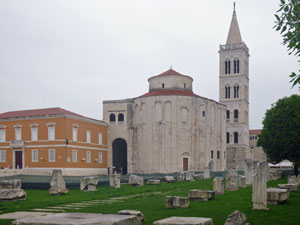 Roman forum (3rd century) and St Donatus church (9th century) |
|
|
|
|
||
 |
Day 5 - Zadar to Preko by boat, Preko to Tkon by bike and Tkon to Vodice by boat (28 km cycling) |
|
|
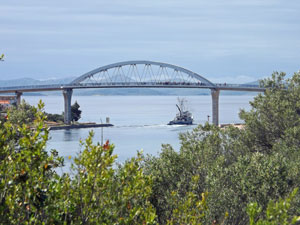 The bridge between Ugljan and Pasman Islands |
It was a pleasant ride as we passed the villages of Kali and Kukljica, looking out to the east over the channel to a mainland lined with the red-roofed white stone houses of village and holiday home. The Dalmatian Coast of today is certainly a well-developed strip. Soon we reached the end of the island, which fortunately for us was connected to the neighbouring island of Pasman by an impressive arch bridge. We stopped to watch a couple of boats pass beneath as they navigated the narrow channel and then set off again. |
 On the bridge |
A further string of villages passed by - Zdrelac, Banj, Dobropoljana, Nevidane, Pasman, Kraj and finally Tkon. Here the "Novi Dan" was waiting, but it was time for a delicious Croatian ice-cream and cup of coffee before boarding for the trip to Vodice. It had been a pleasant enough ride, but a number of us were beginning to wonder what the purpose of the nice new grippy mountain bike tyres was - it would be nice to do a bit of cycling off the bitumen. |
||
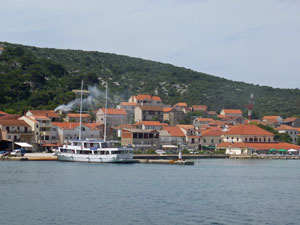 The harbour at Tkon |
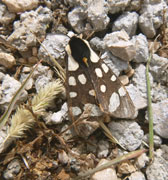 |
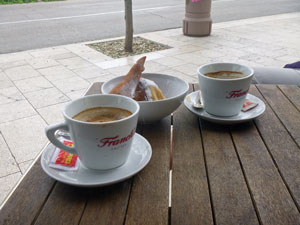 A favourite riding pass-time |
We boarded the boat and set off southwards once again and soon found ourselves "racing" the "Romantica" down the coastline. "Romantica" was the boat of a rival sail-cycle company and we had been following the same itinerary to date, often docking alongside one another in port. This time she sailed on by and away. Our itinerary had said that we would anchor in a cove on the uninhabited island of Zlarin tonight, but apparently the weather forecast of strong winds made this an unsafe option. So it was back to Vodice and a feeling of deja vu. True to the forecast, a very dark band of cloud rolled in from the south west bringing a return of the rain. Time for a nap before the shipboard barbecue being organised by the crew. |
||
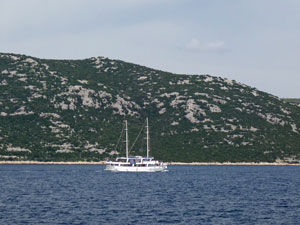 The "Romantica" racing us down the coast |
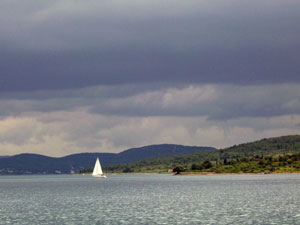 A change in weather near Vodice |
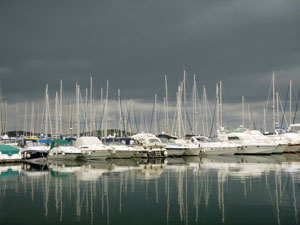 Calm before the storm |
Afterwards, we headed into town for a coffee beneath the patter of rain on canvas, as inside the cafe the locals cheered on Hajduk Split to victory in the Croatian Football Cup final. Hmmmm! I wonder if the crew were watching! |
 |
Day 6 - Vodice to Skradin by bike and a visit to Krka National Park (38 km cycling) |
|
||
 Heading out into the wind |
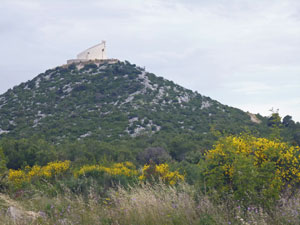 Gospa od Karmela - the only hill for kilometres |
 Houses destroyed during the 1991-95 war |
A short section of main road and it was back into the wind on country roads across a flat and featureless plain, past a battle-scarred village, through the old stone houses of Cista Mala and beneath a dual carriage freeway. Here we started heading southward and the crosswind gusts were almost knocking the bikes off the road. A short descent and climb took us through the hamlets of Piramatovci and Krkovic to the hardest climb of the day. The peleton was becoming very spread out by the time we reached the road junction that headed south west to Skradin. |
|||
 The flatlands inland from Vodice |
 |
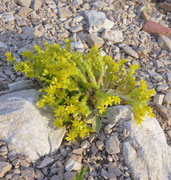 |
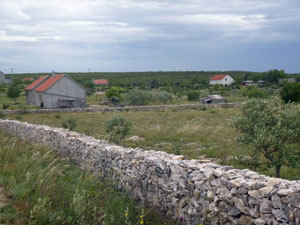 Stome wall and farm houses near Cista Mala |
|
||
|
|
|
|
|
|
 Waterfalls on the Krka River |
 The landscape of Krka National Park |
|
|
|
|
 |
 |
 |
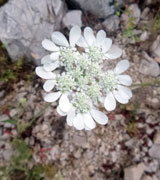 |
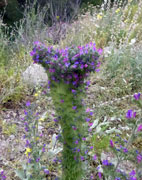 |
|
 |
Day 7 - Skradin to Split by boat |
|
|
|
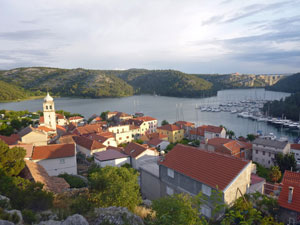 View of Skradin from the castle |
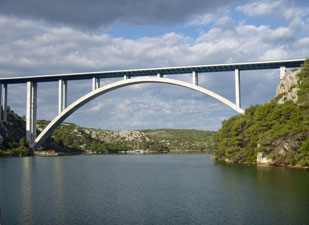 An impressive road bridge over the inlet to Skradin |
|
|
|
|
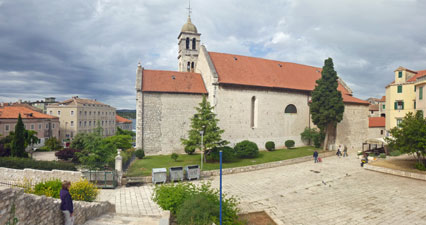 The 15th century Church of St John |
|
|
|
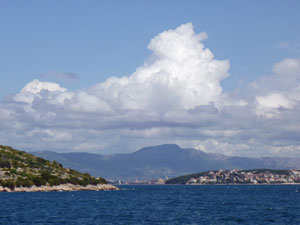 Big clouds over the mainland |
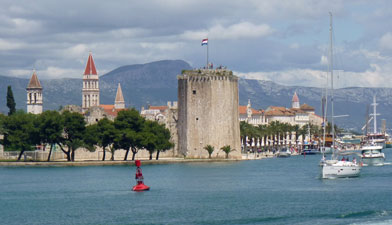 Arriving at the old Venetian city of Trogir |
|
|
||
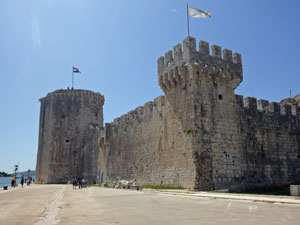 Trogir fortress (15th century) |
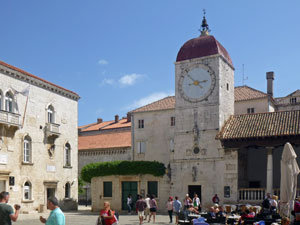 The square in old Trogir |
|
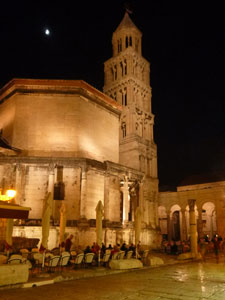 Diocletian's palace and St Duge cathedral in Split |
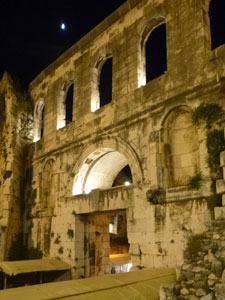 The gateway to old Split by night |
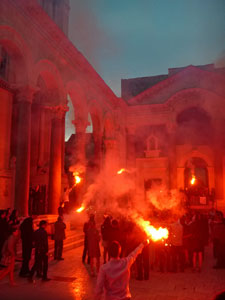 Croatian wedding celebrations |
|
||
    |